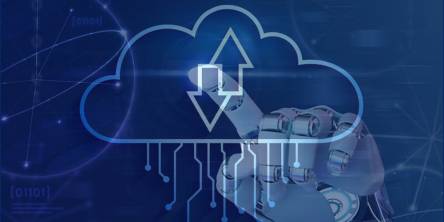Application Integration vs. Data Integration: Purpose, Pros, Cons & Everything in Between

Businesses need to plan and prepare before digitizing operations to survive and thrive in a dynamic business environment. If you want to get things right from the start, it is essential to know the basics of integration technologies.
What is Application Integration?
Application integration is the fusion of information and workflows from different apps. Digitization of operations exerts a compelling need for companies to integrate cloud and on-premise apps. App integration facilitates seamless interoperability and orchestration of data for generating real-time insights.
What is Data Integration?
It is the approach of retrieving data from varied sources and collating it to create a unified layout. Data integration solves the complications of merging different apps to stay on top of data assets. It enables users to extract value from the integrated interface.
Data integration can be further classified into two categories - Operational and Analytic
Analytic DI is applied to business intelligence and data warehousing. Operational DI is ideal for synchronization, consolidation & migration of active databases. It also facilitates data exchange in a business-to-business situation.
In simple terms, DI is the mechanism for merging data between databases, and app integration is for handling data between applications.
3 Key Differences Between AI and DI
1. Efficiency vs. Effectiveness:
Data integration is a scheduled, batch mode procedure that attends to the data at rest. It is why it calls for a sequence of data-intensive approaches. It involves standardization, manipulation, duplication, and reconciliation of data in batches. A data integration task can be run once in a day or a week. However, it cannot be run several times in one instance to get accurate insights into business performance. It also takes a considerable amount of computing time to generate compliance data and identify anomalies.
App integration facilitates real-time communication of live data between apps. The information only changes hands between different apps, following a two-directional orientation. The amount of time taken and data involved in enterprise application integration is modest. It deals with different app connections at the workflow level, with information being the focal point of transference.
2. Transferable vs. Transformative:
App integration works at a service level framework for the timely movement of data. This data flows between applications through an execution process that may be synchronous or asynchronous. In short, enterprise application integration facilitates business operations that traverse across independent applications. These processes are transactional and entail a level of abstraction between the allied business operations and basal applications.
As opposed to this, data integration is a transformative process. It stems from the deployment of relevant databases and the need to transfer data between them. The main goal of data integration is to colonize a warehouse from different transactional mechanisms. The data is extracted from databases and collated to form a unified system of the collated information for analysis. Data integration creates a layer of abstraction from the rudimentary sources. It also includes extrinsic data that lies within the sphere.
3. Clear-cut vs. Consolidated:
Enterprise application integration runs in a predefined architecture. This approach is adopted to synchronize the associated apps in real-time. It also facilitates the maintenance of integration until the end of the procedure. For instance, in a P2P business process, a company procures raw materials from vendors. This process starts with the issuance of requisition orders for purchasing raw materials. It further proceeds to the next stage where a purchase order is created. On the receipt of goods, the documents for order confirmation and shipping notice are framed. Finally, an invoice is generated for the payment and the transaction is updated in the accounting system. This complex process spans across several application systems and external sources. As a Procure to Pay business process may involve outsourcing, the events need to be executed in sequential order. It creates interdependence due to which there is stringent opposition to overlapping. And, it is where the clear-cut architecture of enterprise application integration emerges as an ideal solution.
Data integration runs through the data cluster from end-to-end but publishes only relevant data to the user. Large organizations have scores of integrated applications. It makes access to difficult independent interfaces. Data integration is helpful in such cases for quick and easy data access.
Conclusion
If you're still wondering which approach to take, it's essential to know that each is a perfect fit for a different purpose. Data integration combines data sets from various sources—app integration, on the other hand, converts and shares data between applications.
Accordingly, enterprise application integration is ideal for working with data at the application levels. And, data integration is perfect if your business is operating at the database level.
Similar Articles
For modern businesses to thrive, ensuring the effective management of inventory stands has become vitally important. Inventory management stands as a cornerstone of success. And the emergence of the Internet of Things (IoT) has introduced a new era of connectivity and efficiency across diverse industries.
Do you know what the following e-commerce companies have in common: Amazon, Walmart, eBay, and more? All of these e-commerce companies' apps make use of Java. Java is decidedly among the leading choices of programming language for e-commerce applications because it offers a world of benefits; for example, since Java code can be run on any platform with a Java Virtual Machine (JVM), users of e-commerce apps made with Java can access the said apps on a variety of devices.
Nikola Tesla in 1926, once described what is now called a mobile phone as a telephone that can fit into one's “vest pocket.” As otherworldly as that idea was then, nearly a century later, the reality is even more astounding.
Given the staggeringly high amounts of data being generated worldwide every single day, it ought to come as no surprise that organizations often struggle to pick the right tools to help them effectively harness the potential of all their data.
Managing properties can be a difficult task with the right tools. Property owners must find and use the best property management software. It can be a long and tedious process as there are many options in the property management software market.
In the ever-evolving financial services landscape, industry challenges are numerous and complex. From stringent regulations to rapidly advancing technology and changing consumer expectations, financial institutions face many obstacles.
The human learning capability is a great resource for helping technology evolve and grow, breaking boundaries, and creating new ones. Emulating the ability of humans to learn at a gradual but retentive pace, Machine Learning is the latest power monster that is redefining human-machine interaction.
In the ever-evolving landscape of low-code development, Microsoft's Power Platform stands out as a powerful tool for building custom applications. In today's dynamic digital landscape, creating and managing web pages is no longer the exclusive realm of professional web developers
In the data-driven business world, where information is of utmost priority, organizations are increasingly turning to data warehousing and data marts to harness the power of their data. These data management solutions are pivotal in transforming raw data into actionable insights.









